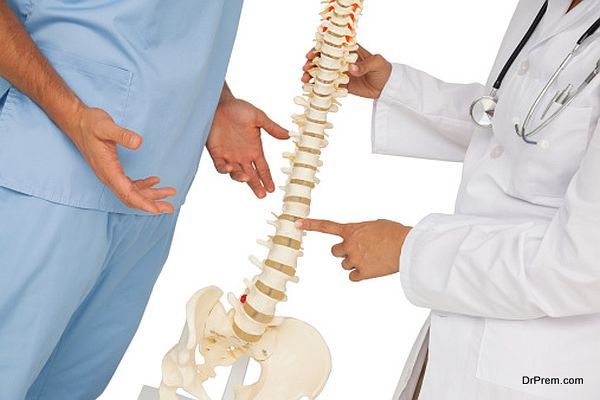A well-balanced diet includes servings of fruits, vegetables, whole-grains, protein, and some healthy fats. Each food item plays an important role in how your body functions. This article will focus on proteins, aside from foods that offer the highest levels of protein, how your body uses it, and why protein is important.
Why Protein is Important?

Protein is important to many cells in the human body. If you didn’t already know, your hair and nails are composed mostly of protein. Not to mention, protein helps build strong bones, skin, blood, muscles, and cartilage. When it comes to building and repairing tissues in the body, protein is at the heart of it all.
Protein is also considered a “macronutrient” in the human body, which means large amounts are required for proper function. Your body uses two other macronutrients – carbohydrates and fats. But the difference with protein is that your body doesn’t store it, which means once it’s all used up, there are no stores for your body to draw from. But this doesn’t mean that you should eat endless amounts of protein. Just like with any food source, proper portions are important. The body also uses “micronutrients” like vitamins and minerals, but in smaller amounts.
How Much Protein Do You Need?
You may hear weightlifters or those individuals looking to “bulk” up packing on the protein. Yes, protein does aid in the development of muscles, but consuming protein alone won’t achieve this. You need to pair your protein intake with regular, targeted exercises. Even with exercise, you don’t need a large influx of protein in order to achieve results.
Here is a basic guideline for protein serving sizes.
- Children under 6 years of age: 5 ounces
- Women: 5 ounces
- Adults over the age of 65: 5 ounces
- Teenage boys: 7 ounces
- Active men: 7 ounces
- Active women: 6 ounces
- Teen girls: 6 ounces
- Children over the age of 6 years of age: 6 ounces
- Men: 6 ounces
These are simply guidelines and may need adjusting based on your goals.
Protein Sources

Now that you understand the benefits of protein in the body and the correct serving size based on your age and goals, let’s discuss what the best sources of protein are.
When you think of protein, what comes to mind? Most likely, meat. Meat is an amazing source of protein and one of the most common that people turn to. But it’s important to choose lean meats. Consuming too much red meat can lead to a long list of health complications due to its high levels of cholesterol and saturated fat. This leads to heart disease and other cardiovascular issues. The best lean meats include chicken breast, pork tenderloin, shrimp, tilapia, and venison.
But what about if you’re a vegetarian or are looking to vary your protein intake with foods other than meats? No problem! There are countless other sources of protein that you can easily incorporate into your diet. Below is a rather comprehensive list, but it doesn’t cover all possibilities.
- Eggs
- Greek yogurt
- Quinoa
- Chia seeds
- Chickpeas
- Lentils
- Peanut butter
- Cottage cheese
- Almonds
- Edamame
- Tofu
Other sources of protein include protein powders, protein bars, and supplements. These are great source of protein when you’re on the run, at the gym, or unable to cook.
High-Protein Pitfalls
Though protein and high-protein diets offer you a long list of benefits, there are some potential risk factors to consider. Like with anything, you should consume protein in moderation. Even if you are weight training or looking to build muscle, too much protein can lead to weight gain.
To fully understand some of the potential downfalls to a high-protein diet, it’s important to understand how your body breaks down protein and uses it for fuel. It’s also important to note that a lot of people seeking weight loss, increase their protein intake while also decreasing carbs. When you do this, the body goes into a state known as ketosis, which means the body burns fat for fuel in the absence of carbs. The breakdown of fat releases ketones into the bloodstream, creating energy.
When the human body breaks down proteins, it also produces higher than normal levels of ammonia. It’s unknown if an increase in ammonia can negatively impact the body or not.
Extra ammonia isn’t the only thing that builds up due to high-protein diets. High levels of calcium has been discovered in the urine of those following a protein-rich diet. This means that the body is releasing too much calcium, which can lead to bone health issues later on in life, including osteoporosis. Why does this happen? When the body consumes high levels of protein, it also increases the amount of acid in the bloodstream. The body then releases calcium, to help counteract the acid. But the released calcium is from the body’s stores, which it needs to promote bone health.
Another risk of high-protein diets is that they often lack other important nutrients your body needs. More specifically, carbohydrates like fruits and vegetables. Because the body naturally changes unused carbohydrates into sugar and fat, people sometimes eliminate them completely from their diets. But they’re also eliminating important vitamins and minerals including fiber and other antioxidants. When incorporating additional meat into your diet for its protein benefits, you’re also increasing your intake of some not-so-healthy saturated fats. These fats can increase your risk of stroke, heart disease, diabetes, and even certain types of cancer. Though protein is very beneficial, following a well-balanced diet is the best way to achieve overall health.
Everything in Moderation

Protein offers a long list of benefits from strong nails and hair to an increase in muscle mass, but when consumed in large quantities, anything can wreak havoc on your body. Be sure to consult a physician before starting any new diet plan. Also, check the recommended dose and serving size of foods based on your size, age, sex, and weight loss goals.
Article Submitted By Community Writer




